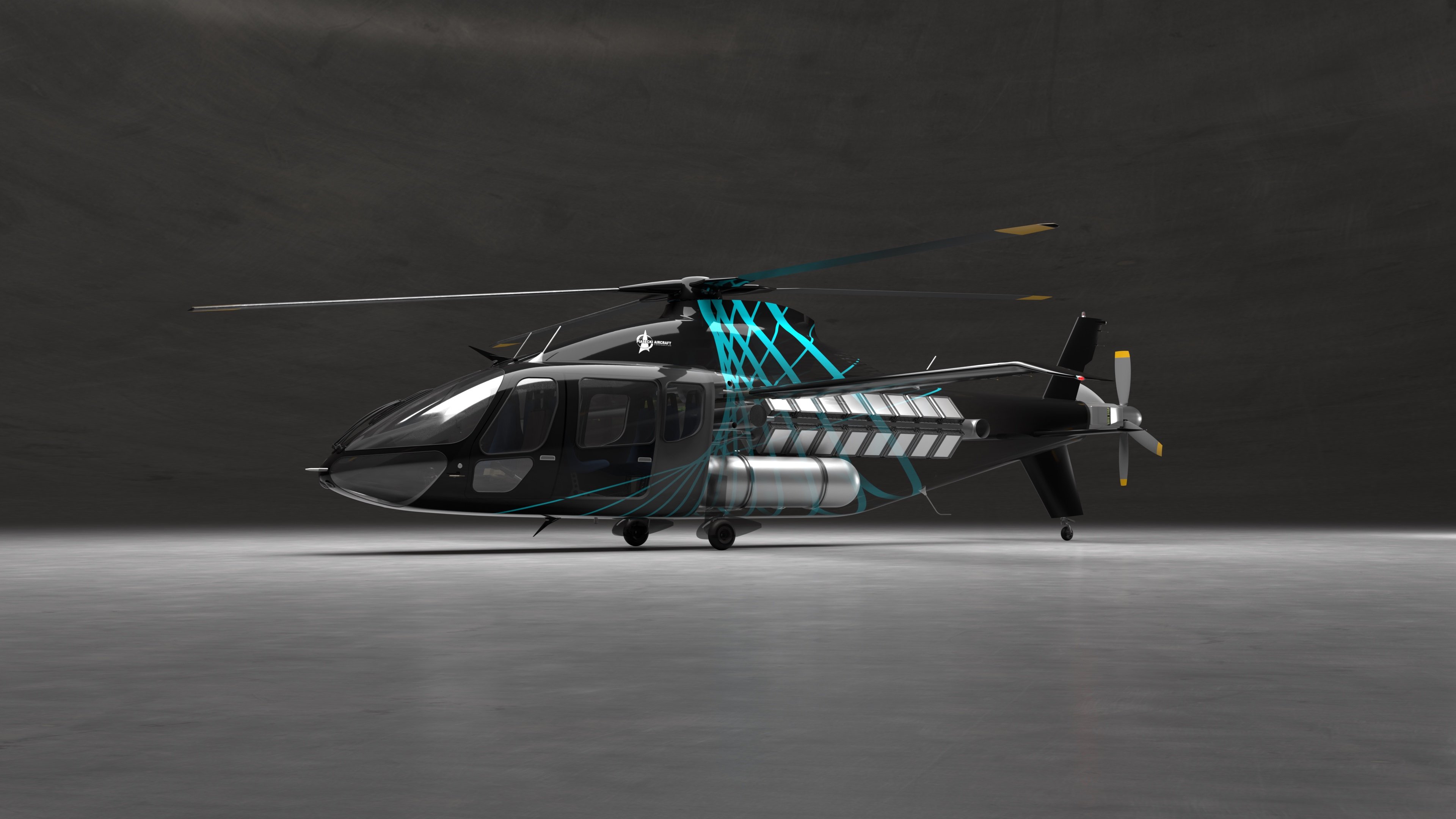Click Here to View This Page on Production Frontend
Click Here to Export Node Content
Click Here to View Printer-Friendly Version (Raw Backend)
Note: front-end display has links to styled print versions.
Content Node ID: 420314
Piasecki Aircraft Corp (PiAC) is stepping up its plans to bring a hydrogen-powered helicopter to market by the end of the decade. Development work that has been significantly boosted by support from the U.S. Air Force now involves the evolution of a 660-kilowatt test rig for the propulsion system into an iron bird unit that will pave the way for a full-scale prototype the company aims to start flying in 2028.
The PA-890 slow-rotor wing compound helicopter is expected to be able to carry a pilot and up to seven passengers on trips of over 200 nm. Its projected payload is 1,660 pounds and the maximum takeoff weight is 7,000 pounds.
Pennsylvania-based PiAC anticipates that the aircraft will be used for both commercial and defense applications such as emergency medical flights, cargo logistics, and personnel transport and could potentially also be employed for commercial air taxi operations. The company expects the PA-890 to deliver a 50 percent reduction in operating costs compared with current turbine helicopters, as well as being much quieter and producing zero emissions.
“We’ve made some significant progress and what we’re striving towards is to increase the energy density available for vertical flight by around five times compared with batteries,” president and CEO John Piasecki told AIN. “We’re aiming for a market that we feel is robust enough to warrant this investment to meet demand from operators needing longer range than they can get from eVTOL aircraft.”
The PA-890 will be powered by a high-temperature proton exchange membrane (HTPEM) fuel cell system being developed by ZeroAvia, which is advancing plans to convert existing airliners seating up to around 80 passengers. As part of work with the USAF, PiAC has already produced a two-seat proof-of-concept demonstrator using an 80-kilowatt propulsion system.
According to the company, five prospective launch customers have shown interest in the PA-890. For now, their identities remain private, but they are providing input for the program regarding their operating requirements and preferences. “For instance, new trends in the emergency medical space have seen customers pushing to increase the payload of the aircraft they operate so that they can carry more sophisticated equipment,” Piasecki commented.
While pressure for air transport to decarbonize may be mounting, Piasecki said the interest his potential customers are showing in hydrogen is mainly driven by economics. “Commercial helicopter operators have margins of only around 4 percent, so affordable operations is an existential issue for them,” he stated, adding that because the hydrogen fuel cell system has far fewer moving parts than a turbine engine, it will significantly reduce maintenance costs.
Pentagon Seeks Transformative VTOL Capability
In November 2023, the USAF awarded PiAC a $37 million contract toward the development of its Aerial Reconfigurable Embedded System (ARES) tilt-duct VTOL aircraft. This came from the Air Force’s Afwerx research and development program as part of its strategic funding increase (STRATFI) initiative, which is available for small businesses that have won Phase 2 contracts from the agency’s small business innovation research and technology transfer (SBIR/STTR) programs.
Originally developed under a DARPA program as a collaboration between PiAC, Lockheed Martin, and Sierra Nevada Corp., ARES is an optionally crewed VTOL aircraft powered by twin ducted fans on a tiltwing. After completing design studies, a contract to develop a proof-of-concept ARES flight demonstrator was awarded to Lockheed Martin and PiAC in 2014. After investing more than $89 million into research and development, DARPA canceled the ARES program in 2019, citing cost overruns and schedule slips. The aircraft was transferred back to PiAC, which has developed and integrated a new triplex fly-by-wire flight control system with its partner Honeywell, thanks to follow-on funding from the USAF and the Army.
“The aircraft is being designed to take off vertically and then use tilt ducts [for cruise flight] and offer multiple payload modules for roles such as cargo and casualty evacuation,” explained Piasecki. “It’s a bit like a Swiss army knife and the footprint is very small. The propellers inside the ducts support collective and monocyclic pitch and so it's very compact.”
Last year, PiAC acquired Lockheed Martin’s Sikorsky Heliplex facility in Coatesville, Pennsylvania, to establish a research and development hub for VTOL aircraft and uncrewed aerial systems, including the PA-890. The 219,000-sq-ft site previously served as the production and delivery center for Sikorsky’s S-76 and S-92 helicopters.
PiAC was founded in 1955 by rotorcraft pioneer Frank Piasecki, whose earlier Piasekci Helicopter company had developed the PV-2 model in 1943 before this venture was sold to Boeing, who renamed it Vertol. To support its new programs and anticipated growth, PiAC is now looking to double in size, leading it to launch a recruitment drive for a mix of young and more experienced engineers.
